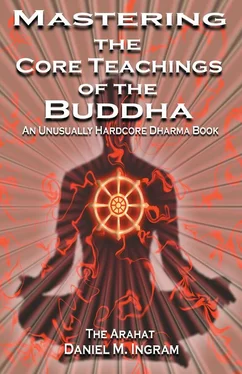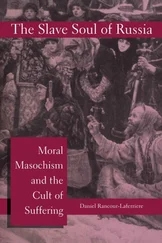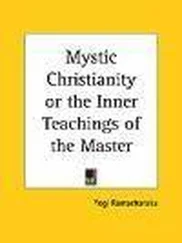Daniel Ingram - Mastering the Core Teachings of Buddha - An Unusually Hardcore Dharma Book
Здесь есть возможность читать онлайн «Daniel Ingram - Mastering the Core Teachings of Buddha - An Unusually Hardcore Dharma Book» весь текст электронной книги совершенно бесплатно (целиком полную версию без сокращений). В некоторых случаях можно слушать аудио, скачать через торрент в формате fb2 и присутствует краткое содержание. Год выпуска: 2009, ISBN: 2009, Издательство: Aeon Books, Жанр: Старинная литература, на русском языке. Описание произведения, (предисловие) а так же отзывы посетителей доступны на портале библиотеки ЛибКат.
- Название:Mastering the Core Teachings of Buddha - An Unusually Hardcore Dharma Book
- Автор:
- Издательство:Aeon Books
- Жанр:
- Год:2009
- ISBN:9781904658405
- Рейтинг книги:5 / 5. Голосов: 1
-
Избранное:Добавить в избранное
- Отзывы:
-
Ваша оценка:
- 100
- 1
- 2
- 3
- 4
- 5
Mastering the Core Teachings of Buddha - An Unusually Hardcore Dharma Book: краткое содержание, описание и аннотация
Предлагаем к чтению аннотацию, описание, краткое содержание или предисловие (зависит от того, что написал сам автор книги «Mastering the Core Teachings of Buddha - An Unusually Hardcore Dharma Book»). Если вы не нашли необходимую информацию о книге — напишите в комментариях, мы постараемся отыскать её.
Mastering the Core Teachings of Buddha - An Unusually Hardcore Dharma Book — читать онлайн бесплатно полную книгу (весь текст) целиком
Ниже представлен текст книги, разбитый по страницам. Система сохранения места последней прочитанной страницы, позволяет с удобством читать онлайн бесплатно книгу «Mastering the Core Teachings of Buddha - An Unusually Hardcore Dharma Book», без необходимости каждый раз заново искать на чём Вы остановились. Поставьте закладку, и сможете в любой момент перейти на страницу, на которой закончили чтение.
Интервал:
Закладка:
I spoke with a friend who basically wanted me to help him
rationalize that his recent A&P experiences occasionally allowed him to touch High Equanimity. My advice was that a much more helpful form of inquiry would be to notice the sensations of fascination with this issue and the sensations of the rest of his sensate universe come and go moment to moment. If he couldn’t manage this, he should be putting his time into trying to figure out how to get together enough vacation time and money to do another long retreat and/or how to increase his daily practice time and the thoroughness of his investigation.
231
How the Maps Help
The maps clearly state that the process is not a particularly linear one, and that after the highs of the Arising and Passing Away there usually follows times of difficulty when all of the spectacular power of the mind and the enjoyment of meditation gained in the Arising and Passing Away is likely to fade dramatically. They warn of the numerous difficulties that may or may not be faced in the Dark Night, as well as provide lots of information about how to deal with them. The most common mistake is failing to investigate the truth of sensations deemed undesirable. It is hard to get on more intimate terms with reality when we feel a bit too emotional, vulnerable, openhearted or shaken, and so progress in the Dark Night is not always easy.
While I do generally wish to avoid biting the hands that have fed me, I must say that not telling students about this territory from the beginning so as to give them a heads up to what might happen is so extremely irresponsible and negligent that I just want to spit and scream at those who perpetuate this warped culture of secrecy. While many teachers may not do so because they don’t think many people will ever get this far, that in and of itself is a scary assumption that should cause some serious questioning of their teaching methods, techniques, and perhaps even motivations.
Imagine that there is a meditation medication called Damnitall that is used to treat some form of suffering (perhaps it’s a pain medicine or an anti-depressant). However, in a subset of patients its long-term use is known to cause pronounced of anxiety, paranoia, depression, apathy, micro-psychotic episodes, a pervasive sense of primal frustration, pronounced lack of perspective on relationships, reduced libido, feelings of dissatisfaction with worldly affairs, and exacerbation of personality disorders, all of which can lead to markedly reduced social and occupational function. Imagine that these side effects are known to persist sometimes months and even years after someone stops taking the medication, with occasional flare-ups and relapses, with the only permanently effective treatment being to increase the dose, along with supportive care and counseling, and hope that these side effects pass quickly with little damage.
Now, imagine that you are living in the dark days of paternalistic medicine during which doctors are prescribing this stuff without fully 232
How the Maps Help
disclosing the potential side effects despite the fact that they are fully aware of them. Imagine that drug companies are not forced to disclose known side effects. Does anything in this scenario make you a bit uncomfortable? I should hope so!
Let’s say for the sake of argument that I am a fanatic who is blowing this thing way out of proportion. Let’s assume that Damnitall only causes these effects in 1 out of every 10,000 patients. Would you have these side effects included on the little piece of paper that comes in the bottle? Lets say it’s 1 in a 100? At what point does it become absurd that those doctors and drug companies are being allowed to get away with this? Unfortunately, I must admit that I do not know the exact odds of these side effects happening to you. I do know firsthand that they happen and that if you cross the A&P Event you are fairly likely to run into at least some of them.
These side effects are no fantasy. When they show up they are as real and powerful as if some dangerous drug had seriously skewed your neurochemistry, and I often wonder if that might be something like what happens. Thus, it seems only fair to have the same standards that we apply with such pronounced zeal and fervent litigation to drug companies and doctors also apply to meditation teachers and dharma books. For reasons unknown to me, this book is the first one I know of to spell out all of these things explicitly in language that everyone should be able to understand so that you can go into meditation having been fully informed of the risks and benefits and thus make informed decisions about your own practice. In the spirit of professionalism, I call on others who promote the dharma to adopt a similarly high standard for their own work.
Maps point out that people might be able to get stuck for a little while in Equanimity if they do not investigate the sensations that make up even equanimity, peace, relief, expectation, confidence, etc. The models also go into great detail about what actually happens in each stage of enlightenment and what does not happen (presented later), though this aspect of the maps is much more controversial than the maps of the progress of insight.
Thus, the maps at their best tell the meditator in clear and systematic ways exactly what to do, what to look for, why, and exactly 233
How the Maps Help
how not to screw up at each stage. They are no substitute for clear practice and investigation of the sensations that make up one’s experience, and they are poor aids to those who refuse to heed them and follow their advice. As I continue to mention, they can also be used as a basis for useless and even harmful competition between gung ho meditators with insecurity issues. It can and has been argued convincingly that one certainly doesn’t need to know these maps at all so long as one practices well. Despite the dangers of competition and over-intellectualization, the maps still have tremendous value when used as they were meant to be.
One very valid criticism of the maps, as I mentioned before, is that people are often very susceptible to suggestion, often called “scripting.”
Describing these stages can cause people to have something that resembles these experiences just because they have been told that they are expected. The part of the maps that deals with emotional side effects is notorious for causing this particular kind of mimicry. For example, it is basically impossible to sort out what is just fear and what is insight stage 6 (Fear) based upon the presence of fear alone. The aspect of the maps that deals with unusual raptures (both physical and mental) is less suggestible, and is a more reliable indicator of the stage of practice.
However, the fundamental increases and shifts in perceptual
thresholds are extremely hard to fake, particularly if you have access to a map that goes into the extensive details presented here. Shifts in perceptual thresholds are the most reliable markers on the path of insight, the Gold Standard by which these stages are defined. For example, if you recently saw very fine vibrations that changed frequency with the breath, then had a big zap-through, spaced out for a while, and now feel paranoid with some steady 5-7 Hz stuff that quickly leads to chaotic, edgy vibrations with complex harmonics, that’s very likely the insight stage Fear.
Thus, increasing one’s perceptual thresholds in terms of speed, consistency, and inclusiveness should always be the focus of one’s insight practices. Skilled teachers who use and are very good with these maps will take into account all three, i.e. emotions, raptures and perceptual abilities, along with the pattern of these that has unfolded previously, and use these to come up with an educated guess as to what 234
How the Maps Help
Читать дальшеИнтервал:
Закладка:
Похожие книги на «Mastering the Core Teachings of Buddha - An Unusually Hardcore Dharma Book»
Представляем Вашему вниманию похожие книги на «Mastering the Core Teachings of Buddha - An Unusually Hardcore Dharma Book» списком для выбора. Мы отобрали схожую по названию и смыслу литературу в надежде предоставить читателям больше вариантов отыскать новые, интересные, ещё непрочитанные произведения.
Обсуждение, отзывы о книге «Mastering the Core Teachings of Buddha - An Unusually Hardcore Dharma Book» и просто собственные мнения читателей. Оставьте ваши комментарии, напишите, что Вы думаете о произведении, его смысле или главных героях. Укажите что конкретно понравилось, а что нет, и почему Вы так считаете.












